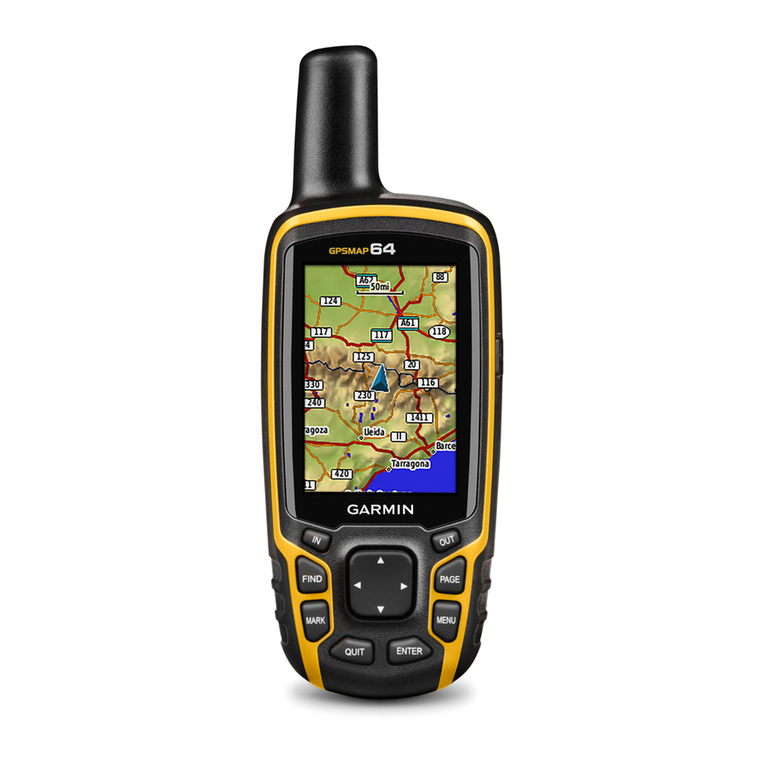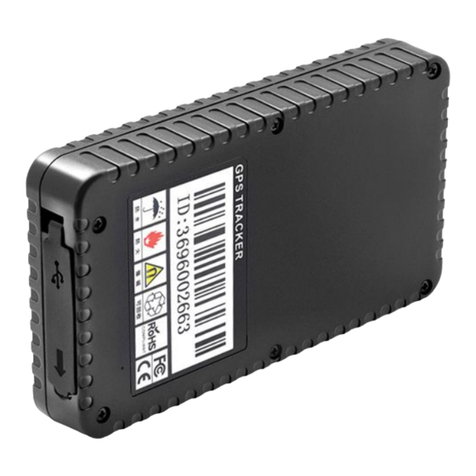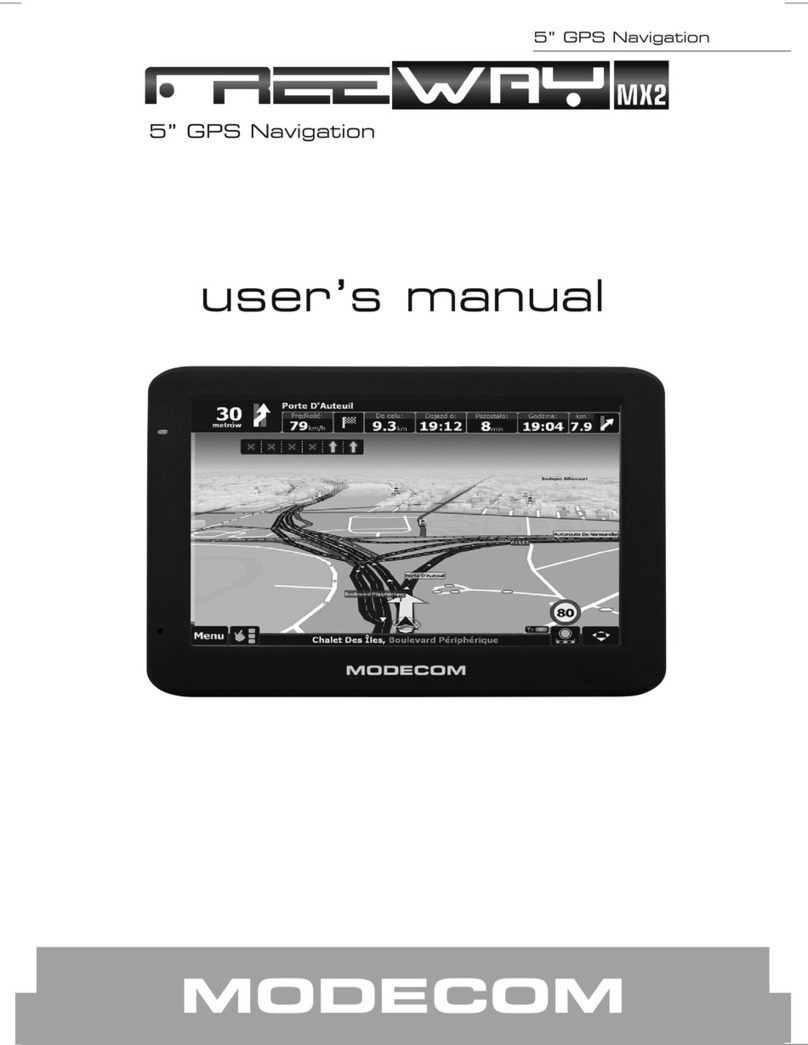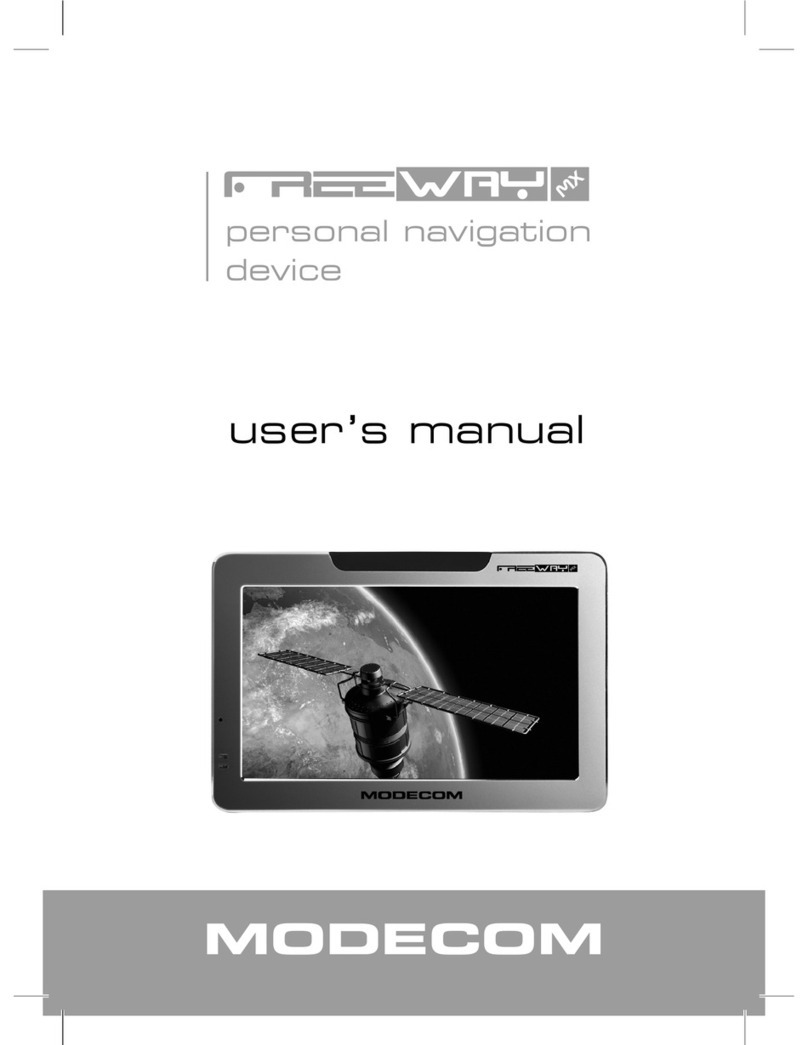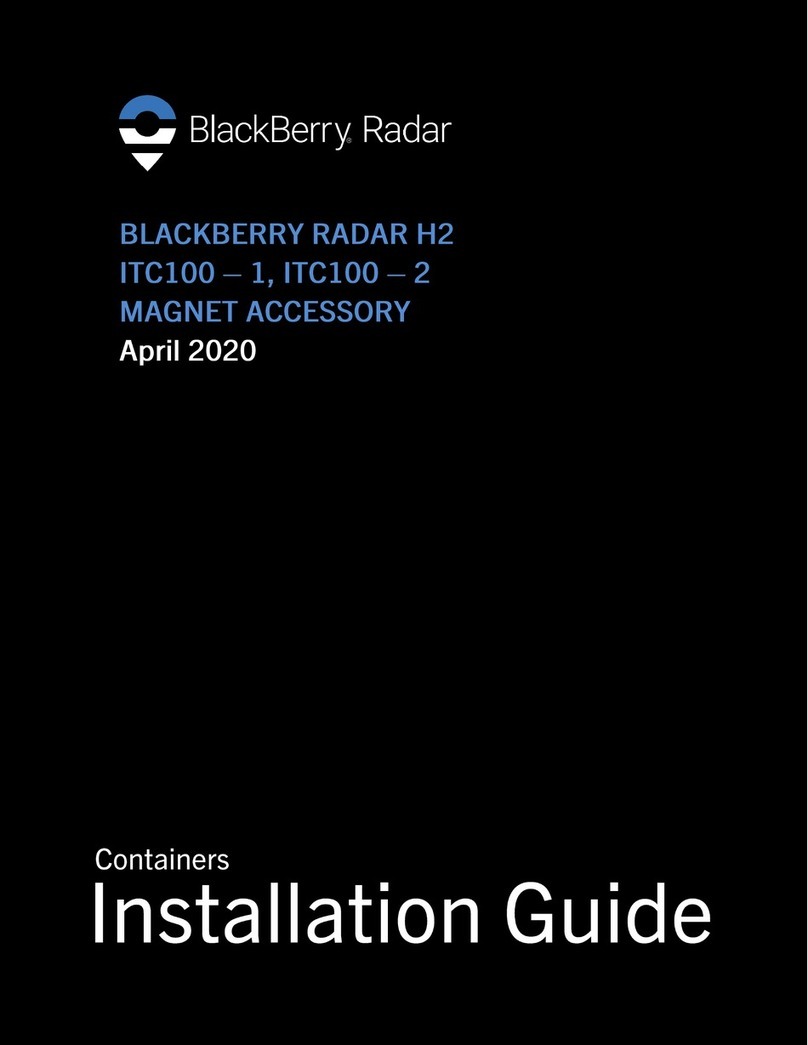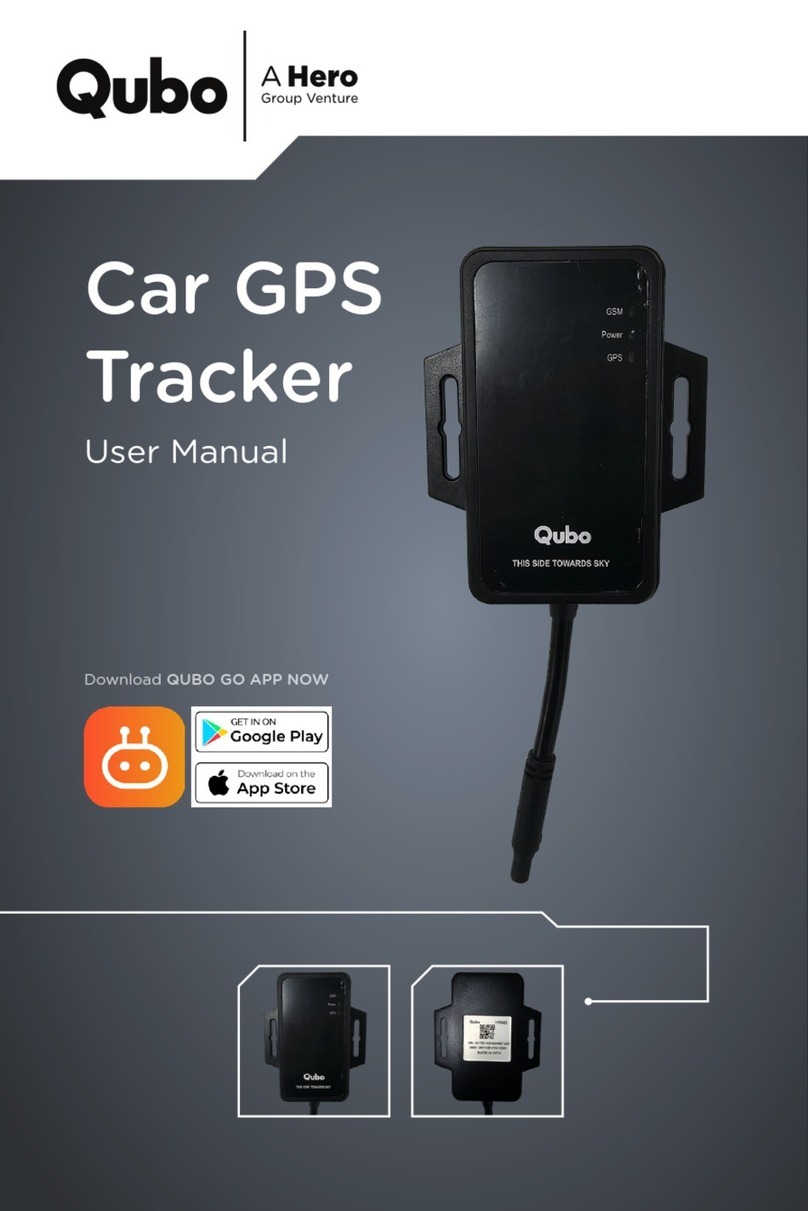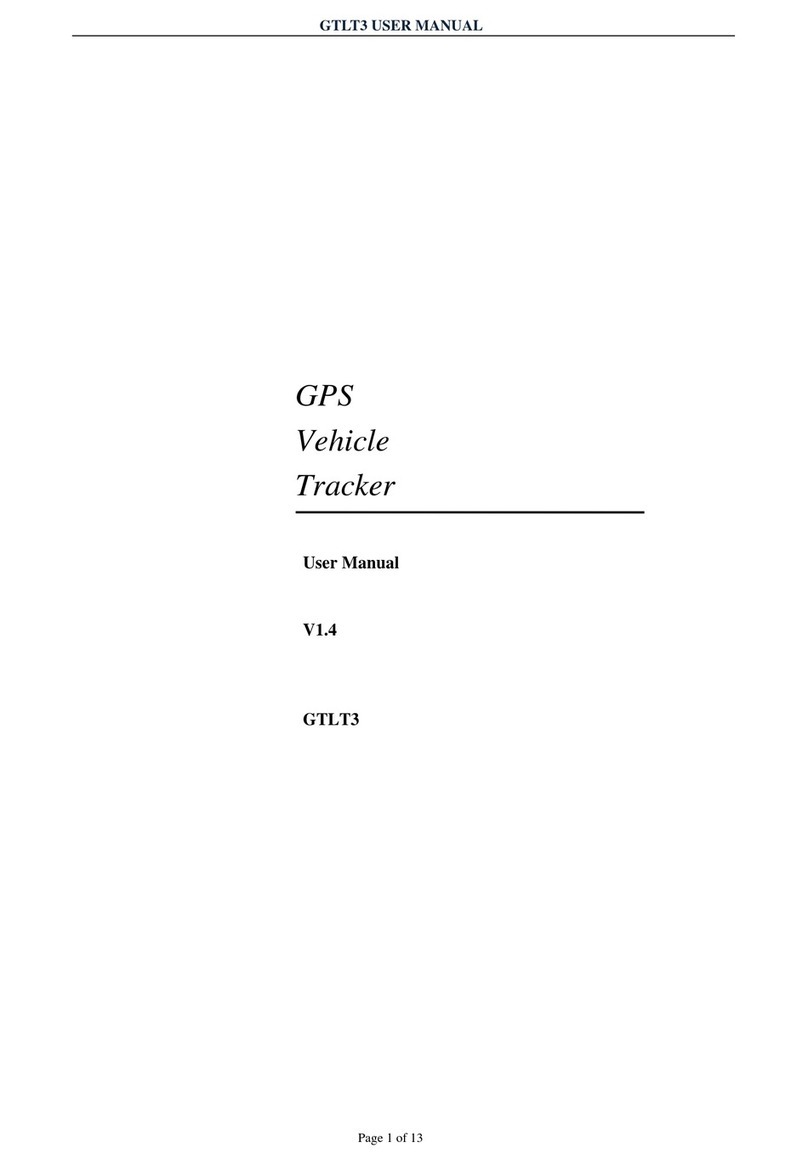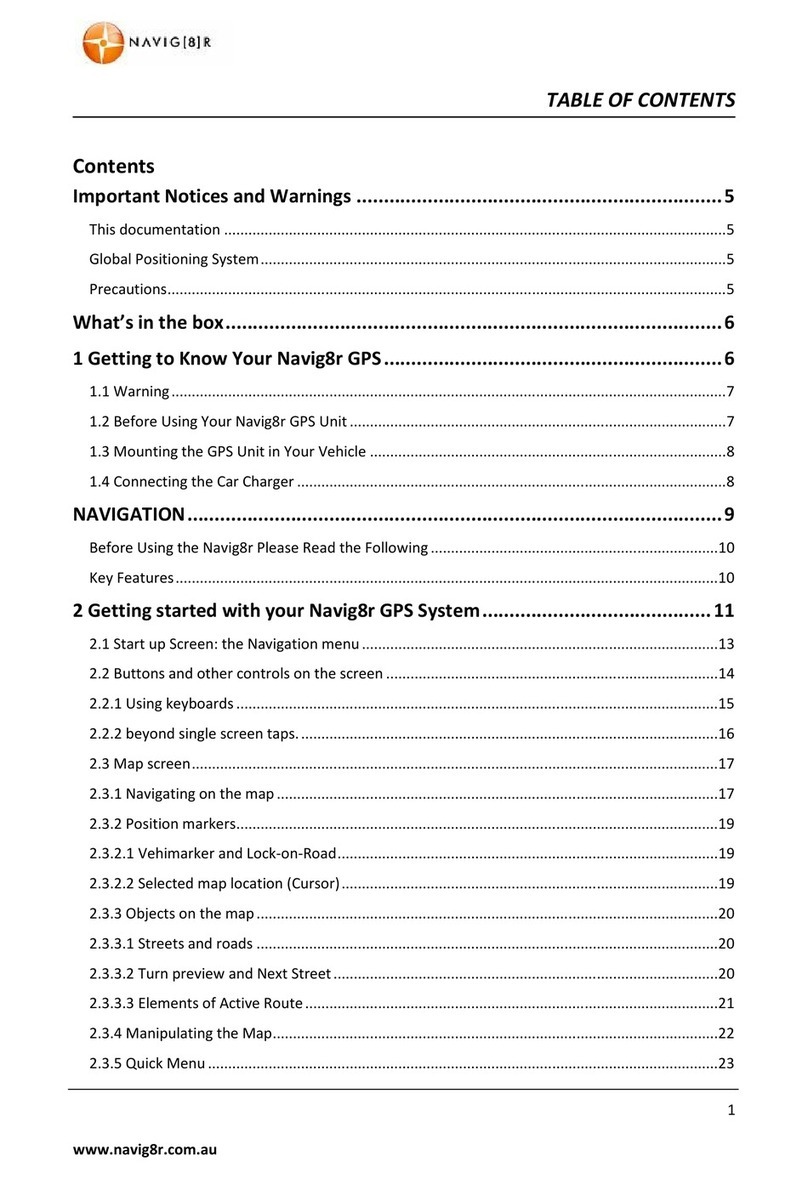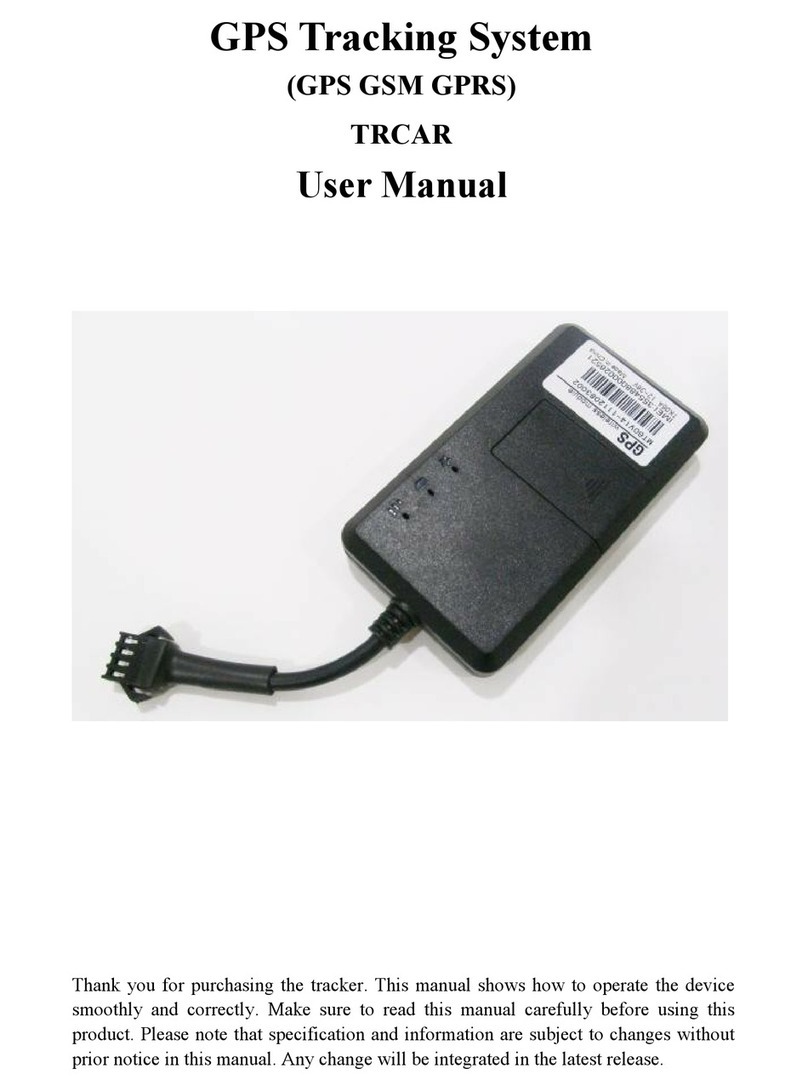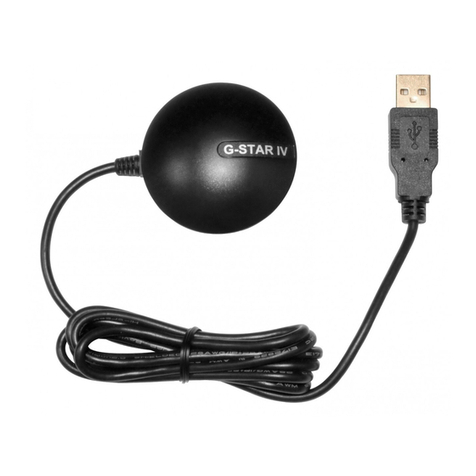netvox R720G Series User manual

Wireless GPS Tracker with Tilt Angle
Model: R720G
Wireless GPS Tracker
with Tilt Angle
R720G Series
User Manual
Copyright©Netvox Technology Co., Ltd.
This document contains proprietary technical information which is the property of NETVOX Technology. It shall
be maintained in strict confidence and shall not be disclosed to other parties, in whole or in part, without written
permission of NETVOX Technology. The specifications are subject to change without prior notice.

1
Table of Content
1.Introduction......................................................................................2
2.Appearance.......................................................................................3
3. Main Features ..................................................................................3
4. Set up Instruction .............................................................................4
5. Data Report .....................................................................................5
5.1 Example of ReportDataCmd ............................................................5
5.2 Example of ConfigureCmd ..............................................................6
5.3 Example of Threshold Configuration...............................................7
6. Installation.......................................................................................8
7. Information about Battery Passivation................................................8
7.1 To determine whether a battery requires activation .......................... 8
7.2 How to activate the battery...............................................................9
8. Important Maintenance Instruction.....................................................9

2
1. Introduction
R720G is a ClassApositioning monitoring device based on LoRaWAN open protocol of netvox, which can monitor the longitude
and latitude, altitude and three-axis angle of the current device, and is compatible with LoRaWAN protocol.
LoRa Wireless Technology:
LoRa is a wireless communication technology dedicated to long distance and low power consumption. Compared with other
communication methods, LoRa spread spectrum modulation method greatly increases to expand the communication distance.
Widely used in long-distance, low-data wireless communications. For example, automatic meter reading, building automation
equipment, wireless security systems, industrial monitoring. Main features include small size, low power consumption,
transmission distance, anti-interference ability and so on.
LoRaWAN:
LoRaWAN uses LoRa technology to define end-to-end standard specifications to ensure interoperability between devices and
gateways from different manufacturers.

3
2. Appearance
3. Main Features
2 ER14505 lithium batteries (3.6V / section) in parallel
Compatible with LoRaWANTM
Simple setting and operation

4
4. Set up Instruction
On/Off
Power On Insert batteries. (users may need a screwdriver to open)
Turn On Press and hold the function key for 3 seconds till the green indicator flashes once.
Turn Off (Restore to factory setting) Press and hold the function key for 5 seconds and the green indicator flashes 20 times.
Power Off Remove Batteries
Note
1. Remove and insert the battery: the device is in the turn-off state by default.
2. After 5 seconds of powering on, the device is in engineering testing mode.
3. Every time, after remove and reinsert the battery, the device is in a turn-off state and
need to turn on again.
4.
On/off interval is suggested to be about 10 seconds to avoid the interference of capacitor
inductance and other energy storage components.
Network Joining
Never Join the Network
Turn on the device to search the network.
The green indicator stays on for 5 seconds: success
The green indicator remains off: fail
Had joined the network
Turn on the device to search the previous network.
The green indicator stays on for 5 seconds: success
The green indicator remains off: fail
Fail to join the network
Suggest to check the device verification information on the gateway or consult your platform
server provider.
Sleeping Mode
The device turns on and joins in the
network
Sleeping period: Min Interval
When the reportchange exceeds setting value or the state changes, send a data report
according to Min Interval
Low Voltage Threshold Alarm
Low Voltage
3.2 V

5
5. Data Report
After the device is powered on and connected to the network successfully, a version package will be sent immediately, and
two status packages will be sent 3 minutes after the device is connected to the network.
Default setting:
Report MaxTime:Max Interval =7200s (2 hour)
Report MinTime:Min Interval =300s
*TheMinTime cannot be less than 3min.
Vibration detection:
When the device detects vibration, it sends data packets every mintime until the device detects that the current state is static,
and then reports according to maxtime
Activity threshold
The active threshold can be changed by issuing a command.
The active threshold range is 0x01~0x3F (The default value is 0x02)
Calculation method: ActiveThreshold /16
ex. ActiveThreshold=2, 2/16=0.125g=125mg
Note:
1. The first 3 minutes after the screening is the warm-up time of the GPS sensor. The positioning will be affected by
weather, GPS signal and other factors. If the positioning is not found within 3 minutes, the longitude and latitude will be
reported as 0xFFFFFFFF, and the altitude will be reported as 0xFFFF.
2. This device is used for outdoor positioning. Because there is no GPS signal indoors, it cannot be located indoors
The device reported data parsing please refer to Netvox LoRaWANApplication Command document and Netvox Lora
Command Resolver http://loraresolver.netvoxcloud.com:8888/page/index
Data report configuration and sending period are as following:
Min Interval
(Unit: second)
Max Interval
(Unit: second) Reportable Change
Current Change≥
Reportable Change
Current Change<
Reportable Change
Any number between
1~65535
Any number between
1~65535 Can not be 0
Report
per Min Interval
Report
per Max Interval
5.1 Example of ReportDataCmd
FPort:0x06
Bytes
1
1
1
Var(Fix=8 Bytes)
Version
DeviceType
ReportType
NetvoxPayLoadData
Version– 1 bytes –0x01——the Version of NetvoxLoRaWAN Application Command Version
DeviceType– 1 byte – Device Type of Device
The devicetype is listed in Netvox LoRaWAN Application Devicetype doc
ReportType – 1 byte –the presentation of the NetvoxPayLoadData,according the devicetype
NetvoxPayLoadData– Fixed bytes (Fixed =8bytes)

6
Example of Uplink
#Packet1: 01B5012401761E920000A9
1st byte (01): Version
2nd byte (B5): DeviceType 0xB5 (R720G)
3rd byte (01): ReportType
4th byte (24): Battery-3.6v , 24 Hex=36 Dec 36*0.1v=3.6v
5th-8th byte (01761E92): Latitude-24.518290°
9th byte (00): AngleX-0°
10th byte (00): AngleY-0°
11th byte (A9): AngleZ--87°, A9(HEX)=-87 Dec,-87*1°=-87°
// Negative numbers are represented by 2's complement
#Packet2: 01B50224070A517C010021
1st byte (01): Version
2nd byte (B5): DeviceType 0xB5 (R720G)
3rd byte (02): ReportType
4th byte (24): Battery-3.6v , 24 Hex=36 Dec 36*0.1v=3.6v
5th-8th byte (070A517C): Longitude-118.116732°
9th byte (01): HDop-1
10th -11th byte (0021): altitude Gps-33m, 21 Hex=33 Dec
5.2 Example of ConfigureCmd
FPort:0x07
Bytes
1
1
Var(Fix =9 Bytes)
CmdID
DeviceType
NetvoxPayLoadData
CmdID– 1 byte
DeviceType– 1 byte – Device Type of Device
NetvoxPayLoadData– var bytes (Max=9bytes)
R720G 0xB5
0x01 Battery
(1Byte,
unit:0.1V)
Latitude
(Signed
4Bytes,unit:0.000001°,
0xFFFFFFFF when
can’t fix )
AngleX
(1Byte Signed
Value,Unit:1°)
AngleY
(1Byte, Signed
Value ,Unit:1°)
AngleZ
(1Byte, Signed
Value ,Unit:1°)
0x02 Battery
(1Byte, unit:0.1V)
Longitude
(Signed4Bytes,
unit:0.000001°,
0xFFFFFFFF when
can’t fix)
HDop
(1Byte,Unit:1)
altitudeGps
(Signed 2Bytes,
unit:1m, 0xFFFF
when can’t fix)

7
Config
ReportReq
R720G
0x01
0xB5
MinTime
(2bytes Unit:s)
MaxTime
(2bytes Unit:s)
Reserved
(5Bytes,Fixed 0x00)
Config
ReportRsp 0x81
Status
(0x00_success)
Reserved
(8Bytes,Fixed 0x00)
ReadConfig
ReportReq 0x02
Reserved
(9Bytes,Fixed 0x00)
ReadConfig
ReportRsp 0x82
MinTime
(2bytes Unit:s)
MaxTime
(2bytes Unit:s)
Reserved
(5Bytes,Fixed 0x00)
(1)Configure R720 G device parameter MinTime = 300s, MaxTime = 7200s
Downlink: 01B5012C1C200000000000
Device return:
81B5000000000000000000 (configuration success)
81B5010000000000000000 (configuration failure)
(2)Read R720G device parameter
Downlink: 02B5000000000000000000
Device return:
82B5012C1C200000000000 (device current parameter)
5.3 Example of Threshold Configuration
(1)Assume that the active threshold is set at 2m/s2,
The value to be set is 16 * 2=32, and the last value obtained is an integer, configured as 32.
Configure R720 G device parameter ActiveThreshold= 0x20
Downlink: 03B5200000000000000000
Device return:
83B5000000000000000000 (configuration success)
83B5010000000000000000 (configuration failure)
(2)Read R720 G device parameter
Downlink: 04B5000000000000000000
Device return: 84B5200000000000000000 (device current parameter)
Description Device CmdID Device
Type NetvoxPayLoadData
SetActiveThresholdReq
R720G
0x03
0xB5
ActiveThreshold
(1Byte)
Reserved
(8Bytes,Fixed 0x00)
SetActiveThresholdRsp 0x83
Status
(0x00_success)
Reserved
(8Bytes,Fixed 0x00)
GetActiveThresholdReq 0x04
Reserved
(9Bytes,Fixed 0x00)
GetActiveThresholdRsp 0x84
ActiveThreshold
(1Byte)
Reserved
(8Bytes,Fixed 0x00)

8
6. Installation
This product has waterproof function. When in use, the back can be adsorbed on the iron surface, or the two ends can be fixed
on the wall with screws.
Note: To install the battery, please use a slotted screwdriver and other tools to open the battery cover
Precautions for assembly:
The user only needs to disassemble and assemble the battery when installing a new battery. Please do not disassemble and
assemble the battery without authorization under other circumstances. Please do not touch the waterproof adhesive tape,
waterproof fixed head, waterproof LED light and waterproof button during the battery assembly. After the battery is installed, an
electric screwdriver with a torque of 4kgf must be used to assemble the casing screws (if there is no electric screwdriver, please
use a cross screwdriver with an appropriate screw to assemble and lock to ensure that the upper cover and lower cover are
tightly assembled), otherwise the airtightness after assembly will be affected; When disassembling and assembling the device, it
is recommended to first understand the internal structure of the equipment to avoid damage to the device.
7. Information about Battery Passivation
Many of Netvox devices are powered by 3.6V ER14505 Li-SOCl2 (lithium-thionyl chloride) batteries that offer many
advantages including low self-discharge rate and high energy density.
However, primary lithium batteries like Li-SOCl2 batteries will form a passivation layer as a reaction between the lithium
anode and thionyl chloride if they are in storage for a long time or if the storage temperature is too high. This lithium chloride
layer prevents rapid self-discharge caused by continuous reaction between lithium and thionyl chloride, but battery passivation
may also lead to voltage delay when the batteries are put into operation, and our devices may not work correctly in this situation.
As a result, please make sure to source batteries from reliable vendors, and it is suggested that if the storage period is more
than one month from the date of battery production, all the batteries should be activated.
If encountering the situation of battery passivation, users can activate the battery to eliminate the battery hysteresis.
ER14505 Battery Passivation:
7.1 To determine whether a battery requires activation
Connect a new ER14505 battery to a resistor in parallel, and check the voltage of the circuit.
If the voltage is below 3.3V, it means the battery requires activation.

9
7.2 How to activate the battery
a. Connect a battery to a resistor in parallel
b. Keep the connection for 5~8 minutes
c. The voltage of the circuit should be ≧3.3, indicating successful activation.
Brand Load Resistance Activation Time Activation Current
NHTONE 165 Ω 5 minutes 20mA
RAMWAY 67 Ω 8 minutes 50mA
EVE 67 Ω 8 minutes 50mA
SAFT 67 Ω 8 minutes 50mA
Note:
If you buy batteries from other than the above four manufacturers, then the battery activation time, activation current, and
required load resistance shall be mainly subject to the announcement of each manufacturer.
8. Important Maintenance Instruction
The device is a product with superior design and craftsmanship and should be used with care.
The following suggestions will help you use the warranty service effectively.
• Keep the equipment dry. Rain, moisture and various liquids or water may contain minerals that can corrode electronic
circuits. In case the device is wet, please dry it completely.
• Do not use or store in dusty or dirty areas. This way can damage its detachable parts and electronic components.
• Do not store in excessive heat place. High temperatures can shorten the life of electronic devices, destroy batteries, and
deform or melt some plastic parts.
• Do not store in excessive cold place. Otherwise, when the temperature rises to normal temperature, moisture will form
inside which will destroy the board.
• Do not throw, knock, or shake the device. Treating equipment roughly can destroy internal circuit boards and delicate
structures.
• Do not wash with strong chemicals, detergents, or strong detergents.
• Do not paint the device. Smudges can make debris block detachable parts up and affect normal operation.
• Do not throw the battery into the fire to prevent the battery from exploding. Damaged batteries may also explode.
All the above suggestions apply equally to your device, batteries, and accessories.
If any device is not operating properly, please take it to the nearest authorized service facility for repairing.
Table of contents
